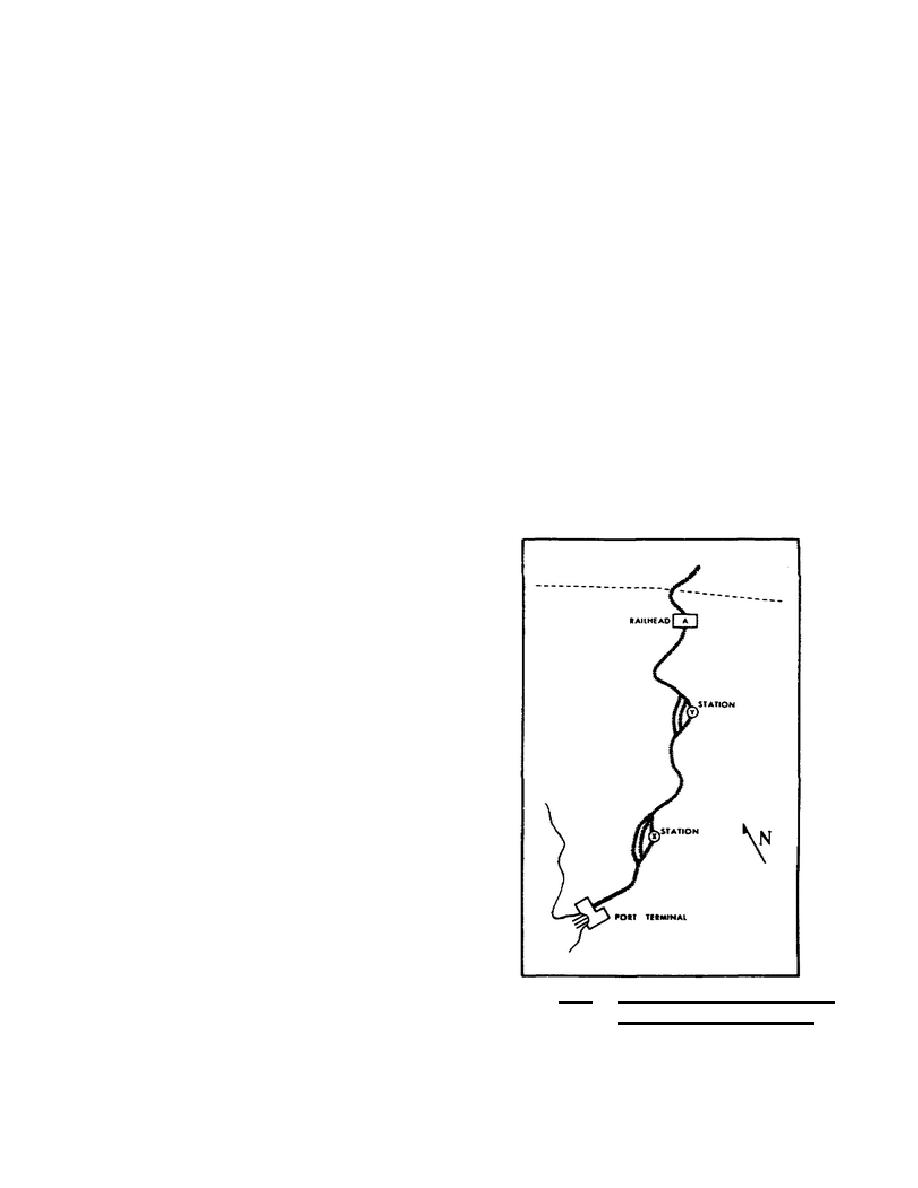
Such devices are easily sabotaged, and damage to them can pose a
serious hazard to moving trains safely.
Four methods of train operation aid in
overcoming the
difficulties encountered immediately upon entry into a theater.
Careful plans should be made in determining the proper method for
early railway operations; any one or a combination of methods may be
used.
The four methods of train operation are fleet, manual block,
train order, and timetable. They are discussed in that order in the
four main paragraphs that follow; important points about the four
methods are summarized in table II which follows paragraph 3.8.
3.5. FLEET OPERATION
During
the
early
stages
of
theater
development,
before
communications are established and before railway sidings are
rehabilitated or constructed, the fleet operation is used.
The
primary advantage of this method is its simplicity.
Loaded trains
move forward for specific periods, normally 4, 8, 12, or 24 hours.
At the end of the designated period, empty trains return toward rear
areas for a corresponding period.
Figure 3.1 shows a railway
as
it
might
appear
in
an
undeveloped theater.
Imagine
that the forward area of the
combat zone is just forward of
railhead A, and the remainder of
the railway north of it is in
enemy hands.
The theater has
not yet expanded far enough to
establish a communications zone,
and the sidings at stations X
and Y are not usable. A single-
track railway runs from the port
terminal
to
the
railhead.
Locomotives and railway cars are
ready to begin fleet operation.
Railhead A can accommodate four
trains at one time.
Four trains are sent out at
1-hour intervals from the port
terminal
to
the
railhead.
It
takes
10
hours
running
Figure 3.1. Railway
Net
in
time for each train and 10
Unexpanded Theater.
hours
to
unload
each
train
at the railhead.
Therefore,
27


 Previous Page
Previous Page
